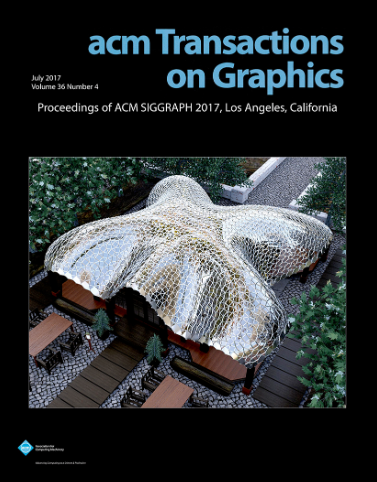Cybersickness Reduction via Gaze-Contingent Image Deformation
IF 7.8
1区 计算机科学
Q1 COMPUTER SCIENCE, SOFTWARE ENGINEERING
引用次数: 0
Abstract
Virtual reality has ushered in a revolutionary era of immersive content perception. However, a persistent challenge in dynamic environments is the occurrence of cybersickness arising from a conflict between visual and vestibular cues. Prior techniques have demonstrated that limiting illusory self-motion, so-called vection, by blurring the peripheral part of images, introducing tunnel vision, or altering the camera path can effectively reduce the problem. Unfortunately, these methods often alter the user's experience with visible changes to the content. In this paper, we propose a new technique for reducing vection and combating cybersickness by subtly lowering the screen-space speed of objects in the user's peripheral vision. The method is motivated by our hypothesis that small modifications to the objects' velocity in the periphery and geometrical distortions in the peripheral vision can remain unnoticeable yet lead to reduced vection. This paper describes the experiments supporting this hypothesis and derives its limits. Furthermore, we present a method that exploits these findings by introducing subtle, screen-space geometrical distortions to animation frames to counteract the motion contributing to vection. We implement the method as a realtime post-processing step that can be integrated into existing rendering frameworks. The final validation of the technique and comparison to an alternative approach confirms its effectiveness in reducing cybersickness.通过视线相关图像变形减轻晕机症状
虚拟现实技术开创了沉浸式内容感知的革命性时代。然而,在动态环境中持续存在的一个挑战是,由于视觉和前庭线索之间的冲突而产生的晕机现象。先前的技术已经证明,通过模糊图像的外围部分、引入隧道视觉或改变摄像机路径来限制虚幻的自我运动(即所谓的 "vection"),可以有效地减少这一问题。遗憾的是,这些方法往往会通过对内容的明显改变来改变用户的体验。在本文中,我们提出了一种新技术,通过巧妙地降低用户外围视线中物体的屏幕空间速度,来减少视线模糊并消除晕机现象。这种方法源于我们的一个假设,即外围物体速度的微小变化和外围视觉中的几何变形可以保持不被察觉,但却能导致减少视差。本文描述了支持这一假设的实验,并推导出其局限性。此外,我们还介绍了一种利用这些发现的方法,即在动画帧中引入微妙的屏幕空间几何扭曲,以抵消造成牵引的运动。我们将该方法作为一个实时后处理步骤来实现,可以集成到现有的渲染框架中。我们对该技术进行了最终验证,并将其与其他方法进行了比较,结果证实了该技术在减轻晕动症方面的有效性。
本文章由计算机程序翻译,如有差异,请以英文原文为准。
求助全文
约1分钟内获得全文
求助全文
来源期刊

ACM Transactions on Graphics
工程技术-计算机:软件工程
CiteScore
14.30
自引率
25.80%
发文量
193
审稿时长
12 months
期刊介绍:
ACM Transactions on Graphics (TOG) is a peer-reviewed scientific journal that aims to disseminate the latest findings of note in the field of computer graphics. It has been published since 1982 by the Association for Computing Machinery. Starting in 2003, all papers accepted for presentation at the annual SIGGRAPH conference are printed in a special summer issue of the journal.
 求助内容:
求助内容: 应助结果提醒方式:
应助结果提醒方式:


